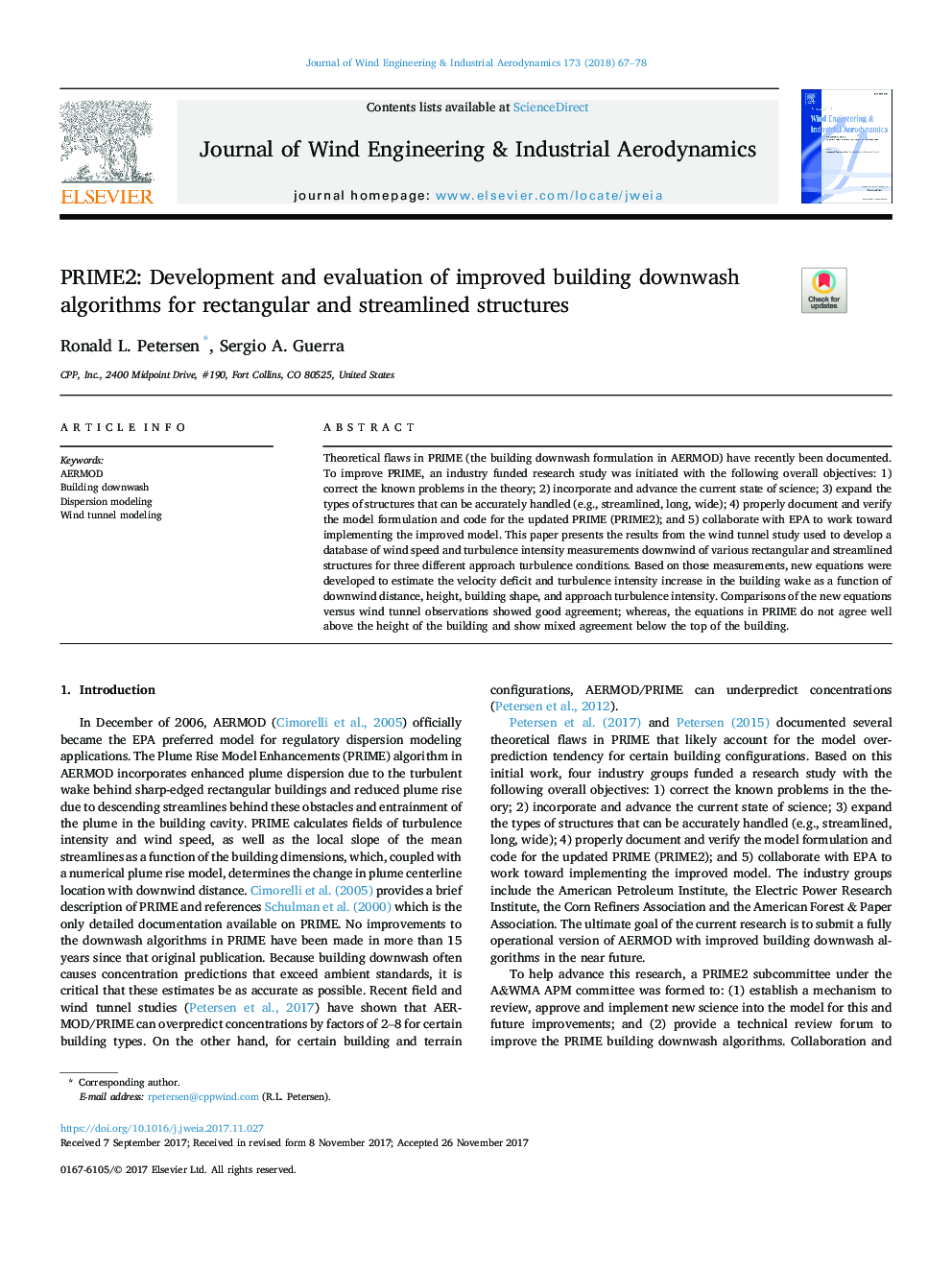| Article ID | Journal | Published Year | Pages | File Type |
|---|---|---|---|---|
| 6757151 | Journal of Wind Engineering and Industrial Aerodynamics | 2018 | 12 Pages |
Abstract
Theoretical flaws in PRIME (the building downwash formulation in AERMOD) have recently been documented. To improve PRIME, an industry funded research study was initiated with the following overall objectives: 1) correct the known problems in the theory; 2) incorporate and advance the current state of science; 3) expand the types of structures that can be accurately handled (e.g., streamlined, long, wide); 4) properly document and verify the model formulation and code for the updated PRIME (PRIME2); and 5) collaborate with EPA to work toward implementing the improved model. This paper presents the results from the wind tunnel study used to develop a database of wind speed and turbulence intensity measurements downwind of various rectangular and streamlined structures for three different approach turbulence conditions. Based on those measurements, new equations were developed to estimate the velocity deficit and turbulence intensity increase in the building wake as a function of downwind distance, height, building shape, and approach turbulence intensity. Comparisons of the new equations versus wind tunnel observations showed good agreement; whereas, the equations in PRIME do not agree well above the height of the building and show mixed agreement below the top of the building.
Related Topics
Physical Sciences and Engineering
Energy
Renewable Energy, Sustainability and the Environment
Authors
Ronald L. Petersen, Sergio A. Guerra,
